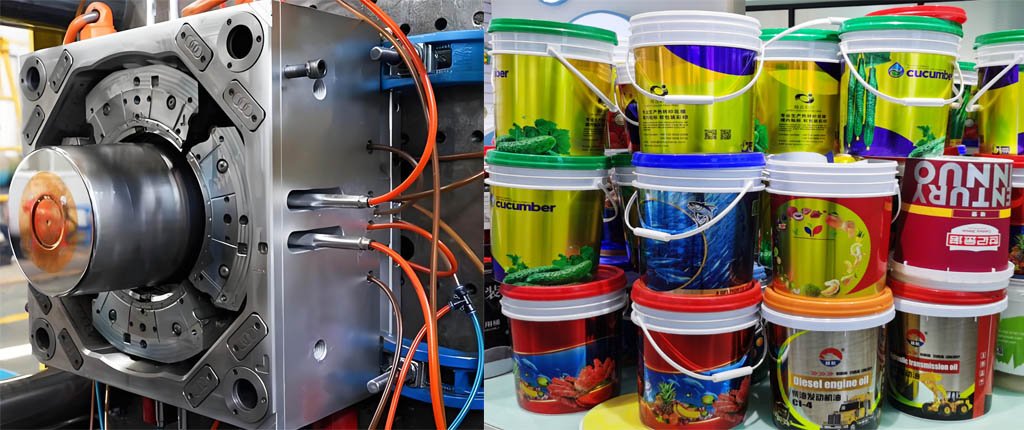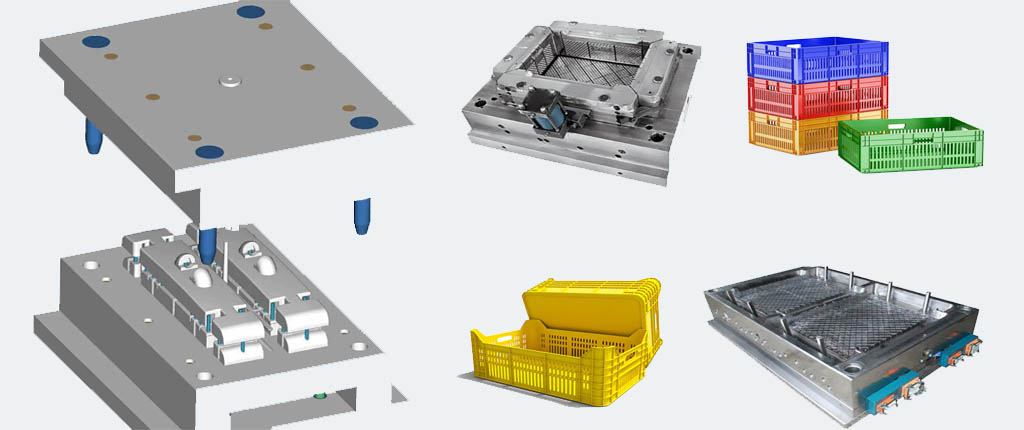Guide to In Mold Labeling paint bucket Mold Design.In the manufacturing process of plastic products, mold design is one of the key links. With the development of technology, in-mold labeling (IML) technology has become an important means to improve product appearance and functionality.
The current market competition is fierce. The style, volume, decoration method, aesthetics and practicality of plastic paint buckets all affect the competitiveness of manufacturers in the market. In order to obtain a high-quality paint bucket and reduce costs and increase efficiency for manufacturers, the quality of the paint bucket mold is very important.
This article will deeply explore the key elements and innovative practices of in-mold labeling paint bucket mold design
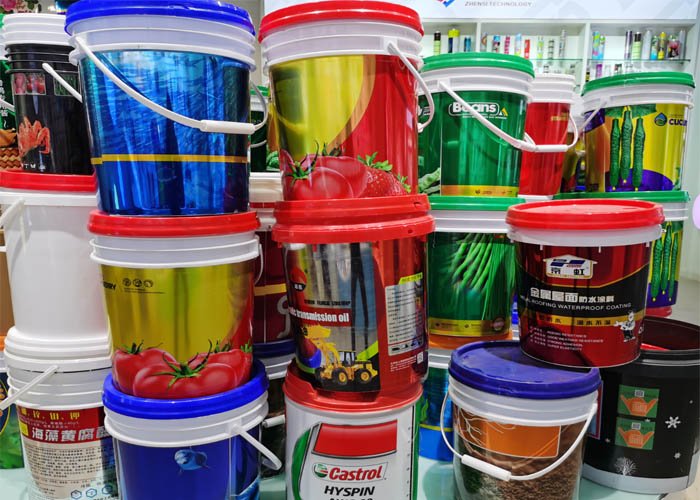
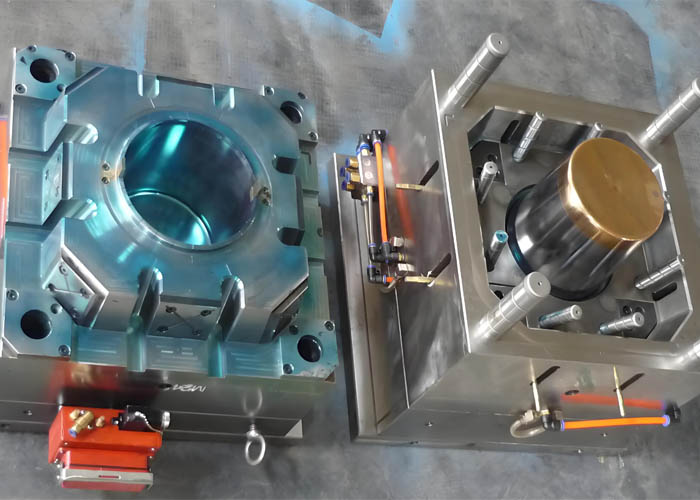
Table of Contents
ToggleWhat is In-Mold Labeling Technology
In-mold labeling is a technology that embeds labels directly into plastic products. Compared with traditional label attachment methods, IML technology not only improves the appearance and texture of the product, but also enhances durability and anti-counterfeiting. IML technology is particularly widely used in the manufacture of containers such as paint buckets.
Paint bucket manufacturers generally have the need to decorate (label) the outside of the injection molded paint bucket, and the in-mold labeling process combines the labeling operation with the blow molding or injection molding process, eliminating the process of labeling after the plastic product is formed. Therefore, a good in-mold labeling paint bucket mold not only saves unnecessary processes and production time, but also greatly reduces production costs.
Some design points for high quality in mold labeling paint bucket molds
Paint Bucket Mold Material Selection
The choice of mold material directly affects the durability and molding effect of the mold. Common mold materials include steel, aluminum alloy, etc. For paint bucket molds, steel with high hardness and strong wear resistance is usually selected to ensure the stability of the mold under high pressure and high temperature environment. The paint bucket mold should be designed to be strong, because the paint bucket mold is a deep cavity mold, and the plastic melt index used is relatively low (plastics with MFI8 or even below are required), so the pressure during injection molding is relatively large. If the mold is not strong enough, the life will be relatively short. According to actual production requirements, steel materials such as P20, 718H, H13 and DIN1.2316 should be selected, so that the reliability of mold life will be improved. If some inferior steel materials are used for mold opening, the mold price is low and the quality cannot be guaranteed.
Bucket mold structure design
Paint bucket Mold structure design is the key to ensure the success of in-mold labeling. The following aspects need to be considered during design:
- Cavity design: Ensure that the geometry of the cavity is consistent with the final product.
- Cooling system: Design an effective cooling system to control the temperature of the mold and ensure the stability of the molding process.
- Exhaust system: Reasonable exhaust design to avoid bubbles during the molding process.
Molding cycle of the paint bucket mold
The molding cycle of the paint bucket is a key factor affecting output and profit. At present, many manufacturers on the market are studying how to reduce the molding cycle to better increase output.
WS MOLD is designed to reduce the molding cycle of the mold as follows:
1. The design of beryllium copper + cooling rod inlaid on the edge greatly improves the cooling of the edge and reduces the production cycle
2. Beryllium copper is inlaid on the top of the head to help the rapid cooling near the gate area (the temperature near the gate is high due to the hot runner, and conventional steel is difficult to cool, and the mold cycle is long)
3. The mold water channel diameter is designed to be larger, the number of channels is increased, but the machine processing accuracy requirements are higher, the processing time is longer, and the cost will increase accordingly.
In addition, the molding cycle of the paint bucket is also related to the performance of the injection molding machine. If the second-generation 700-ton electric pre-molding servo injection molding machine is used, the electric pre-speed synchronous material storage can shorten the molding cycle by 30%. The molding cycle of the WS MOLD in-mold paint bucket mold is as fast as 20s. The average daily output is nearly 1,000 more products than the conventional one, which can meet greater market demand.
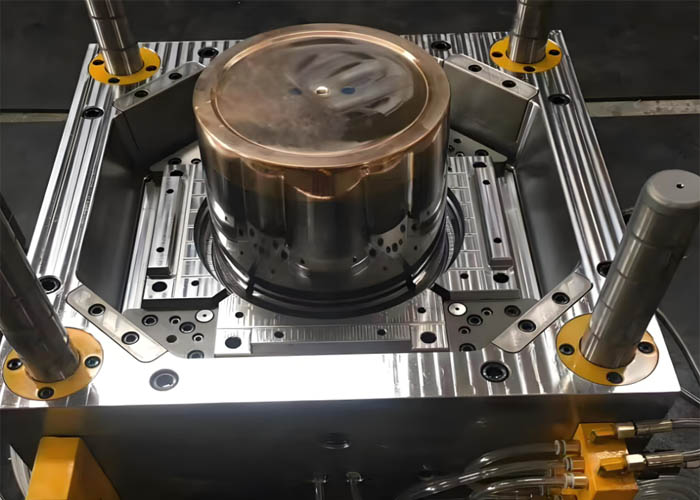
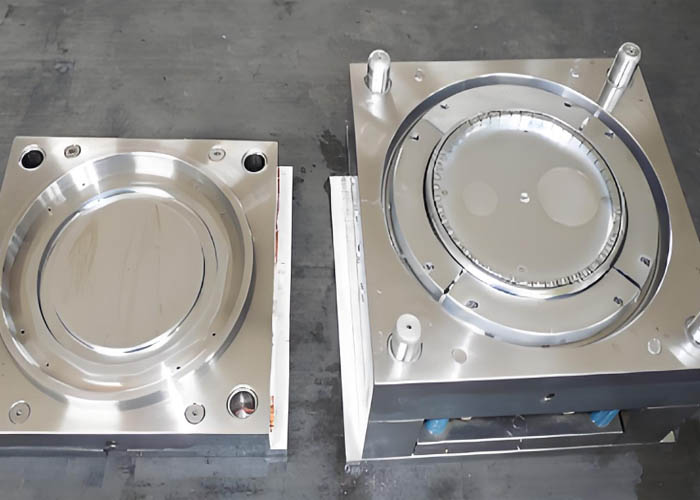
Injection molding system
The key point is the choice of injection molding system. When the paint bucket is produced with plastic with a relatively low MFI, the gate should be large to increase the flow rate, otherwise it will be difficult to form. The needle valve hot runner system is used to increase the flow rate and facilitate better molding of the paint bucket. In addition, the needle valve hot runner can be synchronized with the DKM injection molding machine for simultaneous pre-molding to shorten the cycle.


In-mold labeling process flow
The in-mold labeling process includes the following steps:
- Label preparation: The label is pre-cut into the required shape and placed in the label placement area of the mold.
- Mold closing: The mold is closed and the label is fixed in the mold cavity.
- Plastic injection: The plastic material is injected into the mold, and the label and the plastic material are fused in the mold.
- Cooling molding: The mold is cooled and the plastic material is solidified and molded.
- Mold opening: The mold is opened and the molded paint bucket is taken out.
Challenges of IML mold design
Although in-mold labeling technology brings many advantages, it also faces some challenges in the mold design process:
High precision requirements: The precision of the mold directly affects the quality of the final product.
Temperature control: The mold works at high temperature and needs to be precisely controlled to ensure the perfect fusion of the label and the plastic material.
Material compatibility: The compatibility of the label material and the plastic material needs to be carefully selected to avoid chemical reactions.
The application of in-mold labeling technology in paint bucket mold design not only improves the appearance and functionality of the product, but also promotes the innovation of mold manufacturing technology. With the continuous advancement of technology, future mold design will be more intelligent, efficient and environmentally friendly. For mold manufacturers, continuous learning and application of new technologies will be the key to maintaining competitiveness in the fierce market competition.
